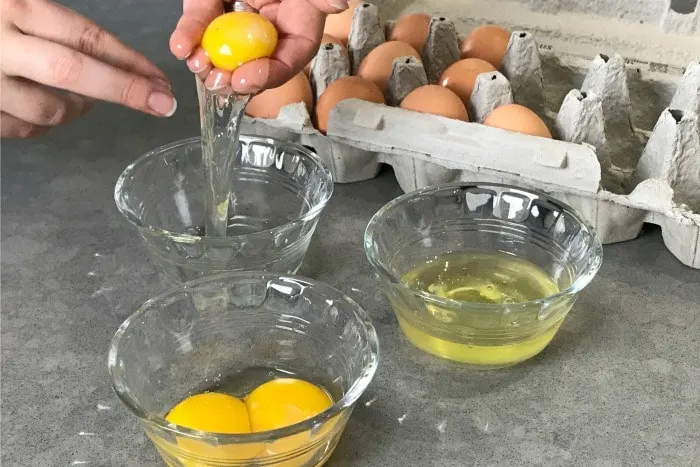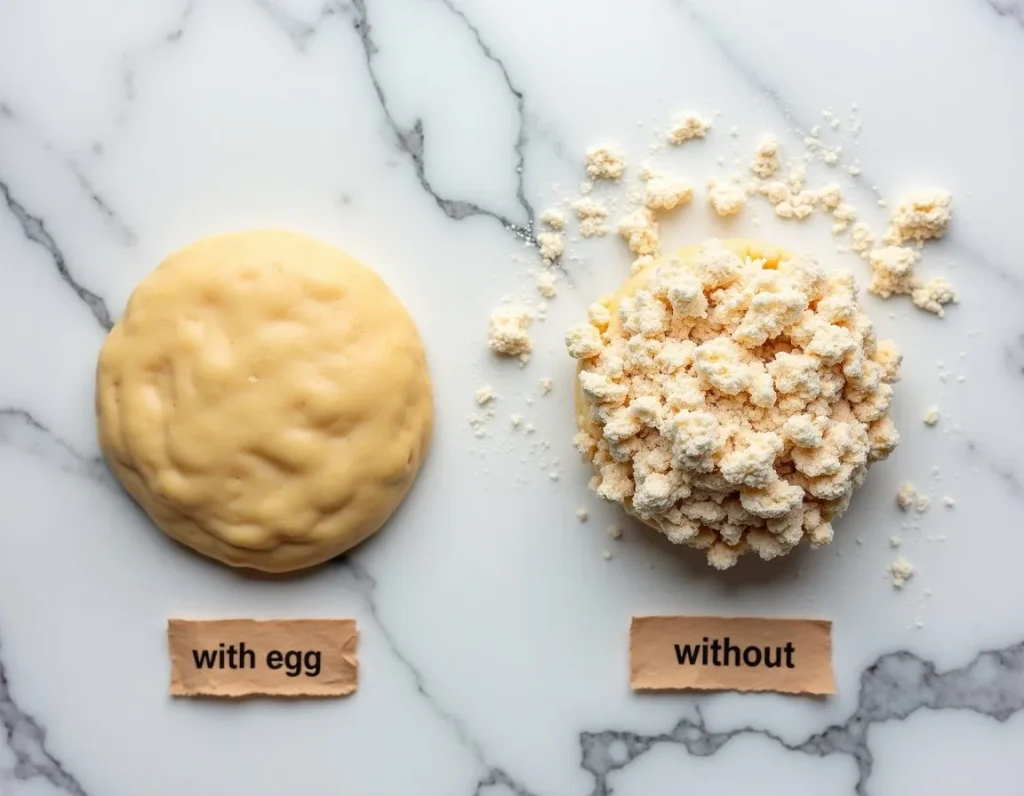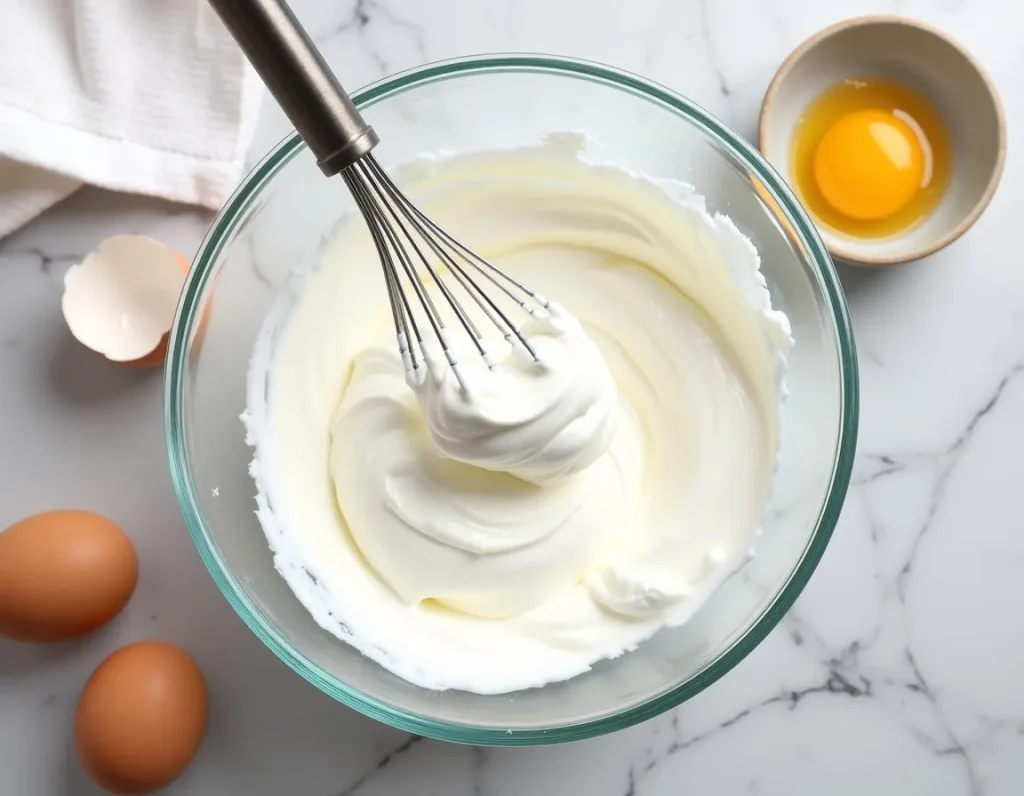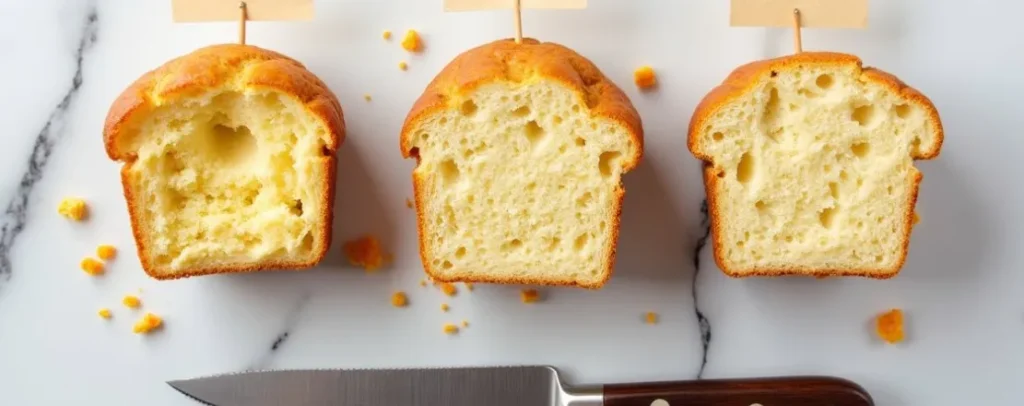The Role of Eggs in Baking: Binding, Leavening, and Emulsifying with Examples
Eggs work magic in your kitchen, but most home bakers never understand why.
These protein powerhouses serve three critical functions that determine whether your cakes rise beautifully or your cookies crumble apart.
Master these roles and watch your baking skills soar to professional levels.

The Binding Power of Eggs: Holding Everything Together
Eggs act as the glue that keeps your baked goods intact. When you crack an egg into your mixing bowl, you release proteins that create strong bonds between all your ingredients.
The egg whites contain albumin proteins that coagulate when heated. This process transforms liquid batter into solid structure. Think of it as nature’s cement mixer working inside your oven.
Egg yolks contribute different binding properties through lecithin, a natural emulsifier. This compound helps fat and water molecules stick together, creating smooth, cohesive batters that bake evenly.
Without eggs, your muffins would crumble like sand castles. Your brownies would fall apart before reaching your mouth. The proteins literally weave a network that traps air, moisture, and flavor.

You can see this binding action when you compare two identical cookie recipes. One batch uses eggs, the other skips them entirely. The eggless cookies spread thin and break easily. The egg cookies hold their shape and maintain structural integrity.
Temperature plays a crucial role in egg binding. Proteins begin coagulating around 140°F and complete the process by 180°F. This gradual transformation allows your baked goods to set properly without becoming rubbery.
Leavening: How Eggs Create Light, Fluffy Textures
Eggs contribute to leavening through two distinct mechanisms. First, they trap air when beaten, creating tiny pockets that expand during baking. Second, the moisture in eggs turns to steam, pushing against the protein structure to create lift.
Whole eggs beaten with sugar incorporate air through mechanical action. The proteins stretch and fold around air bubbles, creating a foam that lightens your batter. This technique works brilliantly in sponge cakes and genoise.

Separating eggs amplifies their leavening power dramatically. Egg whites whip into peaks because their proteins unfold and trap massive amounts of air. When folded into batter, these peaks create incredibly light textures.
The key lies in understanding protein behavior. Fresh eggs whip better than old ones because their proteins maintain stronger structures. Room temperature eggs incorporate air more easily than cold eggs straight from the refrigerator.
Watch what happens when you beat egg whites properly. They transform from clear liquid to opaque foam, increasing in volume by six to eight times. This expansion translates directly into taller, fluffier baked goods.
Steam leavening occurs when egg moisture hits oven heat. Water molecules expand rapidly, creating internal pressure that pushes against the setting protein structure. This dual action of trapped air and steam creates the perfect rise.
Emulsification: Creating Smooth, Professional Batters
Emulsification might sound technical, but it simply means combining ingredients that normally separate. Oil and water refuse to mix naturally, but eggs bridge this gap through their unique molecular structure.
Egg yolks contain lecithin, a powerful emulsifier that acts like a molecular matchmaker. One end of lecithin molecules loves water, while the other end attracts fat. This dual nature allows smooth blending of opposing ingredients.
You witness emulsification every time you make mayonnaise or hollandaise sauce. The egg yolk transforms oil and acid into silky, unified mixtures. This same process works in your cake batters and cookie doughs.
Proper emulsification creates batters with even texture and consistent crumb structure. Ingredients distribute uniformly instead of separating into pockets of fat or flour. Your finished products taste balanced and look professionally smooth.
Temperature affects emulsification success significantly. Room temperature ingredients blend more easily than cold ones. Cold butter and eggs create lumpy batters that never fully combine, resulting in uneven textures.
The order of ingredient addition matters enormously. Add eggs gradually to creamed butter and sugar, allowing each addition to incorporate fully before adding more. Rushing this process breaks the emulsion and creates curdled batters.
Visual Proof: Seeing These Functions in Action

Understanding theory helps, but seeing actual results proves these concepts work. Compare identical recipes where you manipulate only the egg component. The differences become immediately obvious.
Create three identical muffin batters. Leave one exactly as written. Remove eggs from the second batch. Replace whole eggs with only egg whites in the third batch. Bake all three and observe the dramatic differences.
The original recipe produces tall, tender muffins with even crumb structure. The eggless version creates dense, crumbly results that lack cohesion. The egg white version rises higher but feels slightly dry and less rich.
This experiment demonstrates all three egg functions simultaneously. You see binding in the structural differences, leavening in the height variations, and emulsification in the texture contrasts.
Professional bakers use these principles daily. They adjust egg quantities based on desired outcomes. More whole eggs create richer, denser results. Extra egg whites produce lighter, airier textures. Additional yolks enhance moisture and binding power.
Mastering Egg Techniques for Better Baking
Success with eggs requires understanding proper handling techniques. Fresh eggs perform better than older ones in most applications. Store eggs at consistent refrigerator temperatures but bring them to room temperature before using.
Separate eggs carefully to avoid breaking yolks into whites. Even tiny amounts of fat prevent proper whipping. Use clean, dry bowls for whipping egg whites to achieve maximum volume.
Beat whole eggs and sugar until pale and thick for optimal air incorporation. This process takes longer than most recipes indicate, often requiring five to eight minutes of steady beating. The mixture should fall in ribbons when lifted.
Add eggs gradually to prevent breaking emulsions. Pour beaten eggs in thin streams while mixing continuously. Stop mixing as soon as ingredients combine to avoid overbeating and toughening proteins.
Understanding these functions transforms your baking from guesswork to science. You make informed decisions about ingredient substitutions and technique modifications. Your results become consistently excellent instead of occasionally lucky.
Eggs truly are the backbone of successful baking. They bind, leaven, and emulsify simultaneously, creating the textures and structures we love in our favorite treats. Master their roles and watch your baking confidence soar.